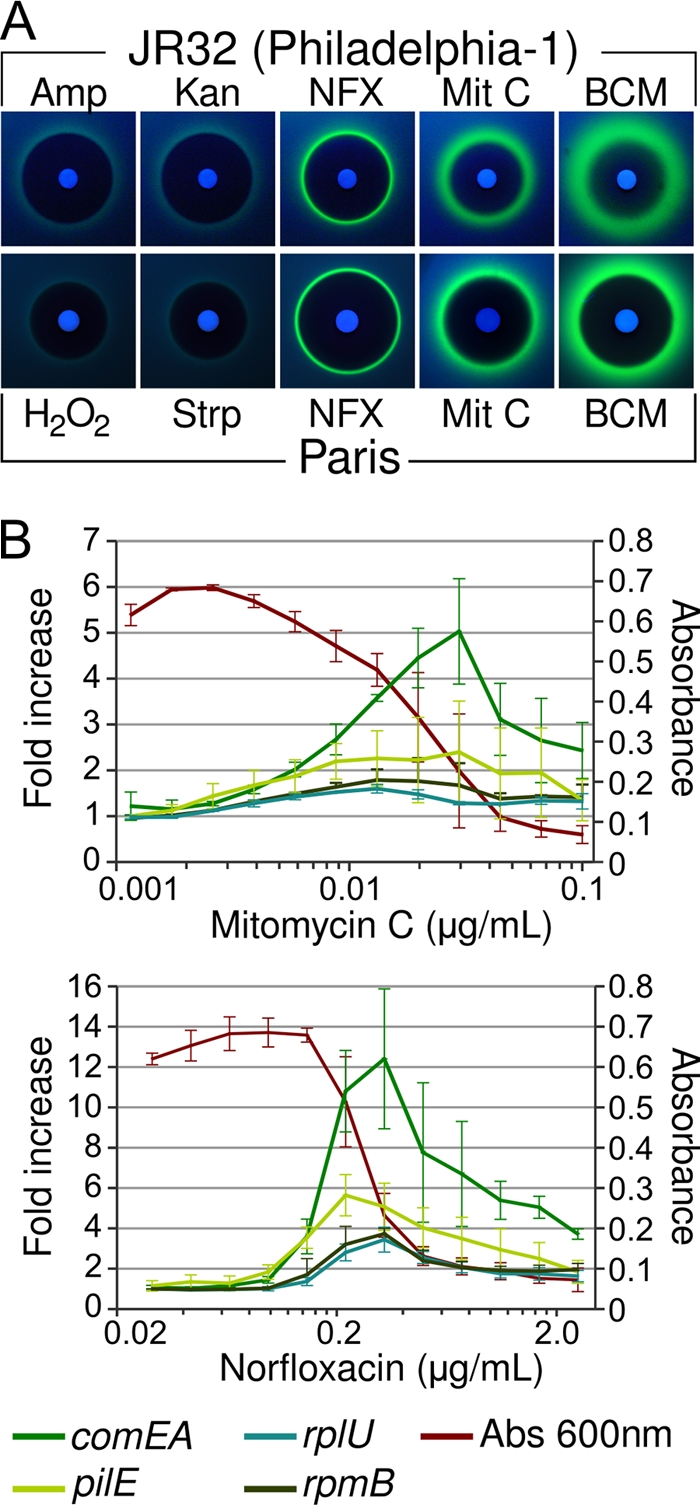FIG. 1.

Expression of the competence gene comEA is induced by antibiotics and DNA-damaging agents. (A) L. pneumophila strains JR32 (a Philadelphia-1-derived strain) and Paris bearing the comEA-gfp reporter plasmid were grown on CYE plates with paper disks containing selected antibiotics and molecules. All shown molecules produce an inhibition zone (dark area around the disks). Mitomycin C (Mit C), norfloxacin (NFX), and bicyclomycin (BCM) but not hydrogen peroxide, streptomycin (Strp), and ampicillin (Amp) induce expression of comEA-gfp (green halo surrounding the inhibition zone). Photographs were taken with the same exposure time under long-UV light (365 nm). (B) Dose-response induction of comEA-gfp by norfloxacin and mitomycin C. L. pneumophila strain JR32 carrying plasmids with comEA-gfp, pilE-gfp, rplU-gfp, or rpmB-gfp fusions were grown to stationary phase in 96-well plates with increasing concentration of antibiotics. The maximum cell density (A600 [Abs 600 nm]) and maximum fold increase in gfp expression relative to cell density (GFP/Abs [A600]) are plotted as a function of antibiotic concentration. The maximum cell density displayed on the graphs corresponds to the strain carrying the comEA-gfp fusion. In both graphs, error bars represent standard deviations derived from three independent experiments.
